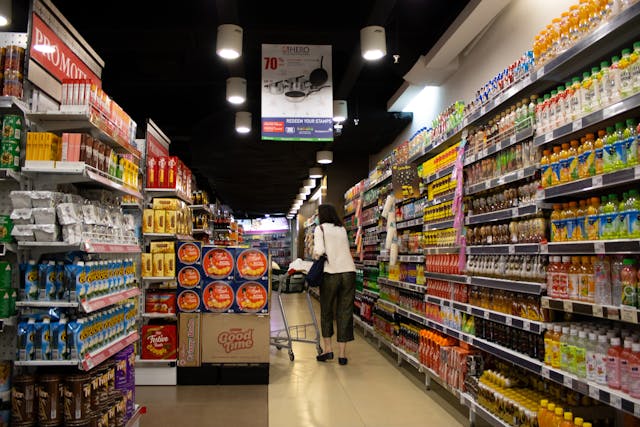How to Open a Convenience Store: A Step-by-Step Guide
Opening a convenience store can be a lucrative business venture for those who are willing to put in the time and effort. However, like any business, it requires careful planning and execution. Before diving into the world of convenience store ownership, it is important to understand the industry and the steps involved in starting a successful store.
The convenience store industry has experienced steady growth over the years, with consumers valuing the convenience and accessibility of these stores. According to a report by IBISWorld, the industry is expected to generate $682 billion in revenue in 2021. This growth can be attributed to factors such as changing consumer preferences, increased demand for fresh and healthy food options, and technological advancements in the industry.
Starting a convenience store involves a number of steps, from conducting market research and securing financing to selecting a location and obtaining necessary permits and licenses. It is important to have a solid business plan in place before embarking on this journey. This article will provide a comprehensive guide on how to open a convenience store, covering everything from market analysis to store design and management.

Planning Your Convenience Store
When it comes to opening a convenience store, planning is key. This section will cover the essential steps to take when planning your convenience store, including market research and location, creating a solid business plan, and understanding legal requirements.
Market Research and Location
Before opening a convenience store, it is crucial to conduct market research and choose a suitable location. This involves analyzing the competition, understanding the target market and demographic, and identifying potential customers.
Location is also a critical factor in the success of a convenience store. It is essential to find a location that is easily accessible and visible to potential customers. The location should also be in an area with high foot traffic, such as near a busy intersection or in a commercial area.
Creating a Solid Business Plan
A solid business plan is essential for any new business, including a convenience store. The business plan should outline the business model, target market, marketing strategies, financial projections, and other essential details. It is essential to set realistic goals and ensure that the plan is feasible and sustainable.
Understanding Legal Requirements
Opening a convenience store involves various legal requirements, such as obtaining licenses and permits and registering for an EIN (Employer Identification Number). It is crucial to research and understand the legal requirements in your area to avoid any legal issues in the future.
In conclusion, planning is crucial when opening a convenience store. Conducting market research and choosing a suitable location, creating a solid business plan, and understanding legal requirements are essential steps to take before opening a convenience store.

Setting Up Shop
When it comes to opening a convenience store, setting up shop is one of the most important steps. This section will cover the key aspects of setting up shop, including choosing the right real estate, store design and layout, and acquiring necessary equipment.
Choosing the Right Real Estate
Choosing the right real estate is crucial for the success of any convenience store. It is important to consider factors such as location, accessibility, and rent/lease costs. The store should be located in an area with high foot traffic and easy access to parking. Additionally, it is important to negotiate a reasonable rent/lease agreement that fits within the store’s budget.
Store Design and Layout
The design and layout of a convenience store can greatly impact the customer experience. A well-designed store should be easy to navigate and visually appealing. The layout should be organized in a way that makes it easy for customers to find what they are looking for. It is also important to consider the placement of items such as snacks, beverages, and other popular items.
Acquiring Necessary Equipment
Acquiring necessary equipment is another important step in setting up a convenience store. This includes items such as refrigerators, freezers, shelving units, and cash registers. It is important to invest in high-quality equipment that is durable and reliable. Additionally, it is important to ensure that the store has all necessary utilities and an occupancy permit. Finally, it is important to obtain appropriate insurance coverage to protect the store from potential risks.
By following these key steps, setting up a convenience store can be a smooth and successful process.
Operational Essentials
Opening a convenience store requires careful planning and attention to detail. To ensure the smooth operation of your store, you’ll need to have a solid understanding of inventory management, hiring and training employees, and implementing effective security measures.
Inventory Management
Managing inventory is a crucial aspect of running a successful convenience store. You’ll need to keep track of stock levels, monitor sales trends, and order new products to ensure that you always have enough inventory on hand to meet customer demand. Using an inventory management system can help you stay organized and streamline your operations.
Hiring and Training Employees
Hiring and training employees is another essential aspect of running a convenience store. You’ll need to find reliable and trustworthy employees who can handle the demands of the job, including managing inventory, handling cash, and providing excellent customer service. Providing thorough training is crucial to ensuring that your employees understand their roles and responsibilities and can provide top-notch service to your customers.
Implementing Effective Security Measures
Implementing effective security measures is critical to protecting your store, your employees, and your customers. Installing a security system, including cameras and alarms, can help deter theft and vandalism. You’ll also need to establish procedures for handling cash and managing inventory to prevent internal theft. It’s essential to stay vigilant and make security a top priority to ensure the safety of everyone involved in your business.
By focusing on inventory management, hiring and training employees, and implementing effective security measures, you can ensure the smooth operation of your convenience store and provide excellent service to your customers.

Financial Management
Budgeting and Managing Expenses
One crucial aspect of running a successful convenience store is managing finances effectively. Budgeting and managing expenses are two key components of financial management. A budget is a financial plan that outlines expected income and expenses for a specific period. It is essential to create a budget before opening a convenience store to determine the startup costs and operating expenses.
To create a budget, start by estimating the startup costs, which include rent, utilities, inventory, equipment, and marketing expenses. It is also essential to consider ongoing operating expenses such as rent, utilities, payroll, insurance, and inventory costs. Once you have estimated the costs, subtract the expenses from the expected income to determine the profit margin.
Managing expenses is another crucial aspect of financial management. It is essential to keep track of all expenses and ensure that they are within the budget. To manage expenses effectively, consider using accounting software to track expenses and income. This will help you identify areas where you can cut costs and improve profitability.
Understanding Profitability and Cash Flow
Profitability and cash flow are two critical aspects of financial management. Profitability refers to the amount of profit generated by the business, while cash flow refers to the amount of cash available to the business. Understanding profitability and cash flow is essential to ensure the long-term success of the convenience store.
To improve profitability, consider increasing sales by offering promotions, expanding the product line, and improving customer service. It is also essential to keep track of gross profit margins, which is the difference between the cost of goods sold and the selling price. A high gross profit margin indicates that the business is generating a significant profit.
Cash flow management is also crucial to the success of the convenience store. It is essential to ensure that there is enough cash available to cover expenses and pay bills. To improve cash flow, consider increasing sales, reducing expenses, and managing inventory effectively. It is also essential to have a financial plan in place to ensure that the business has enough funding to cover expenses and invest in growth.
In conclusion, financial management is a crucial aspect of running a successful convenience store. By budgeting and managing expenses effectively and understanding profitability and cash flow, store owners can ensure the long-term success of their business.

Marketing and Growth Strategies
Developing a Marketing Plan
Before opening a convenience store, it’s essential to develop a marketing plan. A marketing plan outlines the strategies and tactics that will be used to promote the store and attract customers. The plan should include a budget, target audience, and specific goals.
One effective strategy is to create a grand opening event. This can generate excitement and attract new customers. Promotions and discounts can also be offered during the grand opening to encourage customers to return.
Another important aspect of the marketing plan is advertising. Advertising can be done through flyers, billboards, and local newspapers. Social media accounts can also be used to promote the store and engage with customers.
Expanding Your Customer Base
To expand the customer base, it’s important to understand the target audience. Convenience stores typically attract customers who are looking for quick and easy purchases. This may include busy professionals, students, and parents.
One way to attract new customers is to offer a loyalty program. This can encourage customers to return and make repeat purchases.
Another strategy is to offer a variety of products that meet the needs of different customers. This can include healthy snack options, gluten-free products, and vegan items.
Leveraging Technology and Online Presence
In today’s digital age, it’s important to have an online presence. This can include a website and social media accounts. The website should include information about the store, products, and services. It should also be easy to navigate and mobile-friendly.
Social media accounts can be used to engage with customers and promote the store. This can include posting updates, promotions, and responding to customer inquiries.
Technology can also be used to improve the customer experience. This can include offering online ordering and delivery services. Self-checkout kiosks can also be implemented to reduce wait times and improve efficiency.
Overall, developing a comprehensive marketing plan, expanding the customer base, and leveraging technology and online presence can help a convenience store grow and succeed.
Frequently Asked Questions
What are the necessary permits and licenses to open a convenience store?
Opening a convenience store requires various permits and licenses, including a business license, food service permit, and sales tax permit. Depending on the location, additional permits may also be required, such as a tobacco license or alcohol license. It is important to research and obtain all necessary permits and licenses before opening the store to avoid legal issues.
What strategies can be employed to start a convenience store with limited funds?
Starting a convenience store with limited funds can be challenging, but there are several strategies that can be employed. One approach is to focus on selling high-profit margin items, such as snacks and beverages, and gradually expanding the product line as the business grows. Another strategy is to partner with local suppliers to negotiate better prices and reduce costs. Additionally, it is important to keep overhead costs low by operating the store with minimal staff and using cost-effective marketing methods.
What are the steps to establishing a convenience store online?
Establishing a convenience store online involves several steps, including selecting an e-commerce platform, designing a website, and setting up payment and shipping options. It is important to choose a user-friendly platform that can handle the store’s inventory and sales tracking needs. The website should be visually appealing and easy to navigate, with clear product descriptions and pricing. Payment and shipping options should be secure and reliable to ensure customer satisfaction.
How can one determine the profitability of a convenience store?
Determining the profitability of a convenience store involves analyzing the store’s revenue and expenses. This can be done by tracking sales, inventory, and operating costs over a period of time. It is important to factor in all expenses, including rent, utilities, and employee wages, to accurately assess the store’s profitability. Additionally, conducting market research and analyzing industry trends can provide insight into potential growth opportunities.
What are the estimated initial costs involved in opening a convenience store?
The estimated initial costs involved in opening a convenience store can vary depending on the location, size, and product offerings. However, common expenses include rent, inventory, equipment, permits and licenses, and marketing. It is important to create a detailed business plan and budget to ensure that all expenses are accounted for and to avoid unexpected costs.
Which products typically generate the highest revenue in a convenience store?
Products that typically generate the highest revenue in a convenience store include snacks, beverages, tobacco products, and lottery tickets. It is important to regularly assess and adjust the product offerings based on customer demand and industry trends to maximize revenue. Additionally, offering promotions and discounts can help attract and retain customers.




